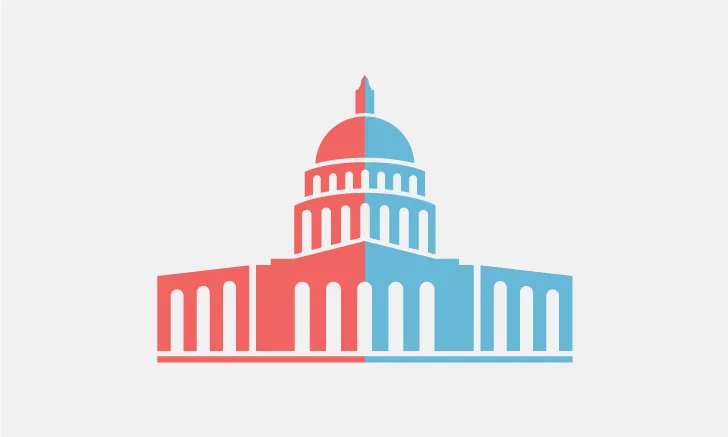Veterinary Career Paths in Federal Government
Elliot Garber, DVM, MPH, MS, DACVPM, US Army Veterinary Corps, Coronado, California.

The morning starts early for a team of veterinarians and veterinary nurses at the National Zoological Park in Washington, DC. Already on the day’s schedule are a flamingo chick with a fractured leg that needs splinting, 3 pygmy marmosets with acute-onset diarrhea, and a healthy panda cub for a checkup.
Across the Atlantic Ocean, another veterinarian with the CDC’s Epidemic Intelligence Service is interviewing residents of a remote Sierra Leone village that has recently experienced several new human deaths from Ebola virus disease. Back in the United States, a USDA APHIS veterinarian and animal health technician arrive at a large California dairy farm to investigate a potential foot-and-mouth disease case. They ship samples overnight to the Department of Homeland Security’s Plum Island Animal Disease Center in New York, where another veterinary team performs diagnostic testing and analysis.
Glossary of Government Acronyms
AAAS:
Over the roar of a helicopter’s thumping rotors, a National Park Service veterinarian radios down to her team of assistants following by truck across the Wyoming grasslands. She has spotted the bison bull suspected of straying outside Yellowstone National Park’s borders and spreading brucellosis to a nearby cattle ranch.
On the other side of the world, a veterinarian with USAID sits down to meet with Indonesian government officials and aid organization representatives to discuss solutions for thousands of livestock left injured and stranded by a recent tsunami.
What do all these veterinarians and their veterinary support team members have in common?
They work for the US federal government, and their positions represent just a small number of the many diverse opportunities available. With more than 3000 veterinarians on the payroll (National Association of Federal Veterinarians, email communication, March 2016), the federal government is one of the largest employers of these professionals in the US.1
The Opportunities
These veterinarians are distributed across almost every government agency, from the FBI to NASA. The majority work for the USDA and are located all over the country, split between the FSIS and APHIS. Most FSIS public health veterinarians work in meat and poultry plants to enforce inspection procedures and safeguard food safety. An FSIS inspection position represents the most common, and some think the easiest, method of beginning federal employment for veterinarians. There are almost always open positions with FSIS, so applicants willing to be flexible in the location and setting of their first government job may find this their foot in the door in an otherwise competitive hiring process. APHIS veterinarians work to protect and improve the health, quality, and marketability of animals, animal products, and veterinary biologics. Their broad mission covers wildlife, livestock, pets, zoo animals, and more.
The USDOD employs about 1000 veterinarians and veterinary nurses on active duty, in the reserve, and as civilians. They provide clinical care for military animals and family pets, ensure food safety for service members worldwide, and increase biosecurity through laboratory work at home and abroad. (See Resources, in References.)
Other government agencies with a significant number of veterinary positions include the FDA, CDC, NIH, and EPA. State and local governments also employ veterinarians in a variety of positions related to big picture issues of animal health.
Fellowships are another way for veterinarians to be introduced to government employment:
The CDC’s Epidemic Intelligence Service has a 2-year training program that trains health professionals in practicing applied epidemiology.
The Science and Technology Policy Fellowship, through the AAAS, provides a yearlong opportunity for veterinarians to shape policy with scientific expertise.
The AVMA sponsors a yearlong fellowship program in which recipients work as scientific advisors to members of Congress.
Job Seeking
The most direct route to federal employment is through an application on the USA Jobs website. (See Resources, in References.) Depending on the position desired, applicants should search for a variety of key words (eg, veterinary, veterinarian, animal health, animal care) and set up a saved search that will regularly email a list of relevant open positions. The automated application process can be confusing to navigate, so speak with someone familiar with the system before submitting an online application.
State and local government jobs for veterinarians can be more difficult to track down, but the US Animal Health Association site keeps an up-to-date list of these job openings. More information on government career tracks and job opportunities can be obtained from the National Association of Federal Veterinarians and the National Association of State Public Health Veterinarians. (See Resources, in References.)
The Benefits
The diversity of job opportunities—including food safety, disease investigation, public education, wildlife medicine, and more—is one of the most appealing aspects of working for the government.
Some veterinarians and veterinary nurses pursue these opportunities in government after concluding that the long hours, high stress, and poor benefits of some traditional practices, along with compassion fatigue, are not sustainable long-term. With few exceptions, government jobs traditionally expect a regular work week and provide standardized, generous benefit packages, including health insurance, paid vacation and sick time, and retirement programs. Also, staying within the same pay and retirement systems while gaining experience with different agencies and career fields is possible.
The Public Service Loan Forgiveness Program (see Resources, in References) also represents a valuable benefit for veterinarians facing a large student loan burden. This program pays off the participant’s remaining student loan balance after 10 years of payments are made while working full-time at any government level.
Conclusion
An important reason for government employment is the sense of personal and professional fulfillment that comes from serving one’s country and solving problems that affect human and animal lives on a large scale. Veterinarians and other veterinary team members seeking job opportunities outside clinical practice should consider working for the government a worthy and exciting alternative.